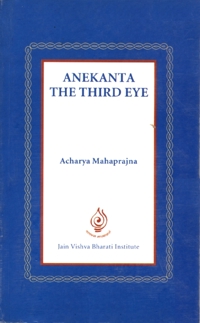
Man is closely related to time. Matter is related to time. The decision of independence is based on time. The decision relative to the present is relative to time.
The great Buddhist philosopher Dharmakirt making fun of the principle of syaadvad said "Syaadvad does not lead you to decisions. It says this can also be and that can also be. Existence can also be and non-existence can also be. Then why can we not think that yoghurt can be a camel and that a camel can be yoghurt?"
While this argument is humorous to hear and if no object was always independent then why can a camel not be yoghurt and vice versa? The camel will turn into yoghurt and the yoghurt into a camel. This seemingly right idea has a fallacy. If a conclusion was arrived on the basis of the relativity of time, one would not have the courage to call syaadvad a doctrine of the indefinite.
On the basis of relativity of time, anekanta accepts that a camel can become yoghurt and yoghurt can become a camel. The question arises, if a man is ill and he needs yoghurt, can a camel be brought to him instead? Similarly if for travel across the desert, yoghurt were placed at one's disposal, would it help? There will be chaos. We should not neglect the manifested modes of the present. Anekanta would never give the result that the yoghurt is capable of carrying passengers or burden. Or that the camel can be used in the place of yoghurt for food. This is not acceptable even to anekanta. Anekanta says the conclusions arrived at on the basis of the present, are managers of contemporary affairs. Contemporary affairs will be run on the basis of contemporary modes. Yoghurt will remain yoghurt and the camel, the camel. The yoghurt will not function as the camel nor will the camel as the yoghurt. But should we always negate reality? It is possible that the particles that have gone into the making of the yoghurt may actually in future go into the making of the camel. The particles that make the composition of the camel's body today, may tomorrow make yoghurt. We never negate this possibility.
 Acharya Mahaprajna
Acharya Mahaprajna
